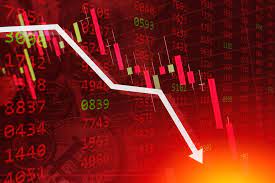
- Dollar cost averaging transforms complicated investing into simple saving
- But it is not foolproof
- Nikkei and 1930’s Dow demonstrate the sub-optimal scenarios of the strategy
- DCA is vulnerable to sequence risk which can have very different wealth outcomes
This month marks the 20th anniversary of the QQQ – the Nasdaq ETF, one of the most profitable financial products ever invented. If an investor allocated $100 each week to the QQQ presently his portfolio would be worth approximately $668.000 or about three times the total investable capital.
Dollar cost averaging transforms complicated investing into simple saving
Such massive wealth creation is a testament to the power of dollar cost averaging – a very simple strategy of allocating a fixed amount of money to a particular asset on a regularly scheduled basis. The basic premise of this approach is that it ignores all of the volatility of the asset and allows the investor to buy more shares when the price is low and less when the price is high thus ensuring a smooth average cost that compounds over time.
Dollar cost averaging converts the very difficult art of investing into a simple mechanical act of saving. The investor does not need to know anything about the economy, the stock market or even any particular company. The idiosyncratic company risk is removed through the construction of the index which is automatically rebalanced and updated by the index makers. The index makers also strive to keep transaction costs as low as possible thus adding to the growth potential of the asset.
But it is not foolproof
There is no doubt that for an individual seeking to build wealth for retirement there is no better strategy than dollar cost averaging into the index. But it is not foolproof. At its very essence DCA depends on the idea of an upward drift in stocks. The assumption is the economy will continue to expand over time and so will the capitalization of the equity market creating higher and higher prices for the index. Generally this thesis holds true, but there are plenty of historical examples of when such assumptions fail.
Nikkei and 1930’s Dow demonstrate the sub-optimal scenarios of the strategy
Imagine yourself a Japanese investor in 1980. The country is becoming a global powerhouse making inroads into every possible market sector as its technology and engineering win the loyalty of consumers around the world. You start your investing journey with a 100 yen allocation to the Nikkei every single week. Forty years later after allocating 200,000 yen into the market your portfolio is worth only 448,000 yen. You’ve still managed to double your money but it required forty years of consistent effort and in the end it may not be enough to fully fund your retirement especially if it lasts 30 years or more.
That’s not even the worst part. In year 24 after dutifully allocating more than 120,000 yen to the Nikkei your portfolio is worth only 65,000 yen. After nearly a quarter of a century of saving you’ve lost half your savings.
The same story occurred in the United States. An investor who started saving in 1920 would have allocated 150,000 dollars to the stock market by 1950 only to see it appreciate to a relatively paltry 244,000 dollars. Furthermore, in 1932 after 12 years of constant saving the investor would have seen his total allocation of 60,000 dollars wither to just 22.000 dollars losing nearly 2/3rds of his investable wealth up to that point.
DCA is vulnerable to sequence risk which can have very different wealth outcomes
In the end dollar cost averaging does work. By 1960 after forty years of savings the investor would have seen his 200,000 dollar total allocation grow to more than 800,000 as the go-go market of the 1960’s created massive wealth, but the strategy’s very success also points to its glaring weakness as it shows that DCA is highly vulnerable to sequence risk. Investors’ wealth depends greatly on the starting point in history.
Is there a better way? Can investors mitigate some of the vicious randomness of the DCA process?
We will examine some ideas in our week long look at the investing process.








